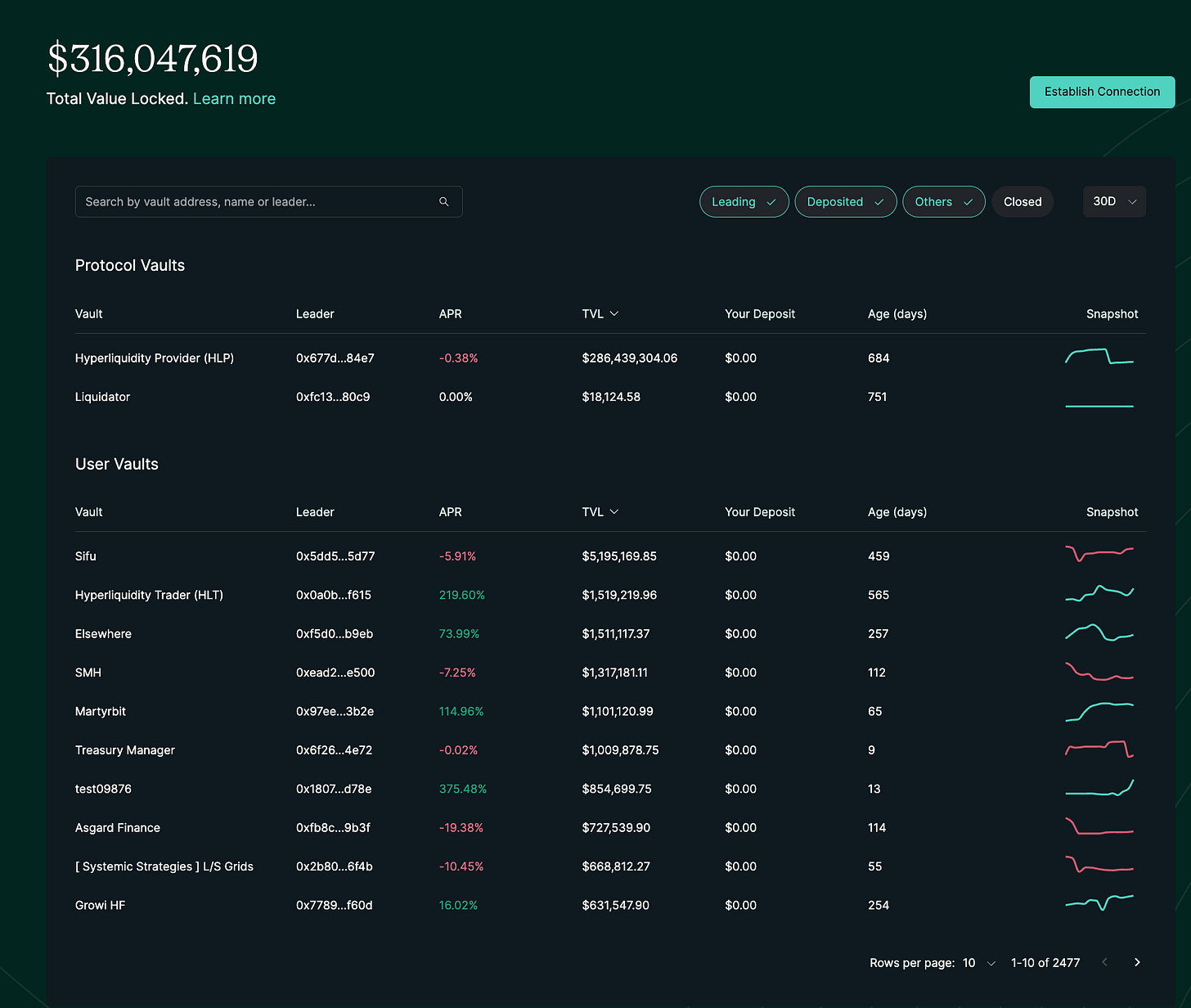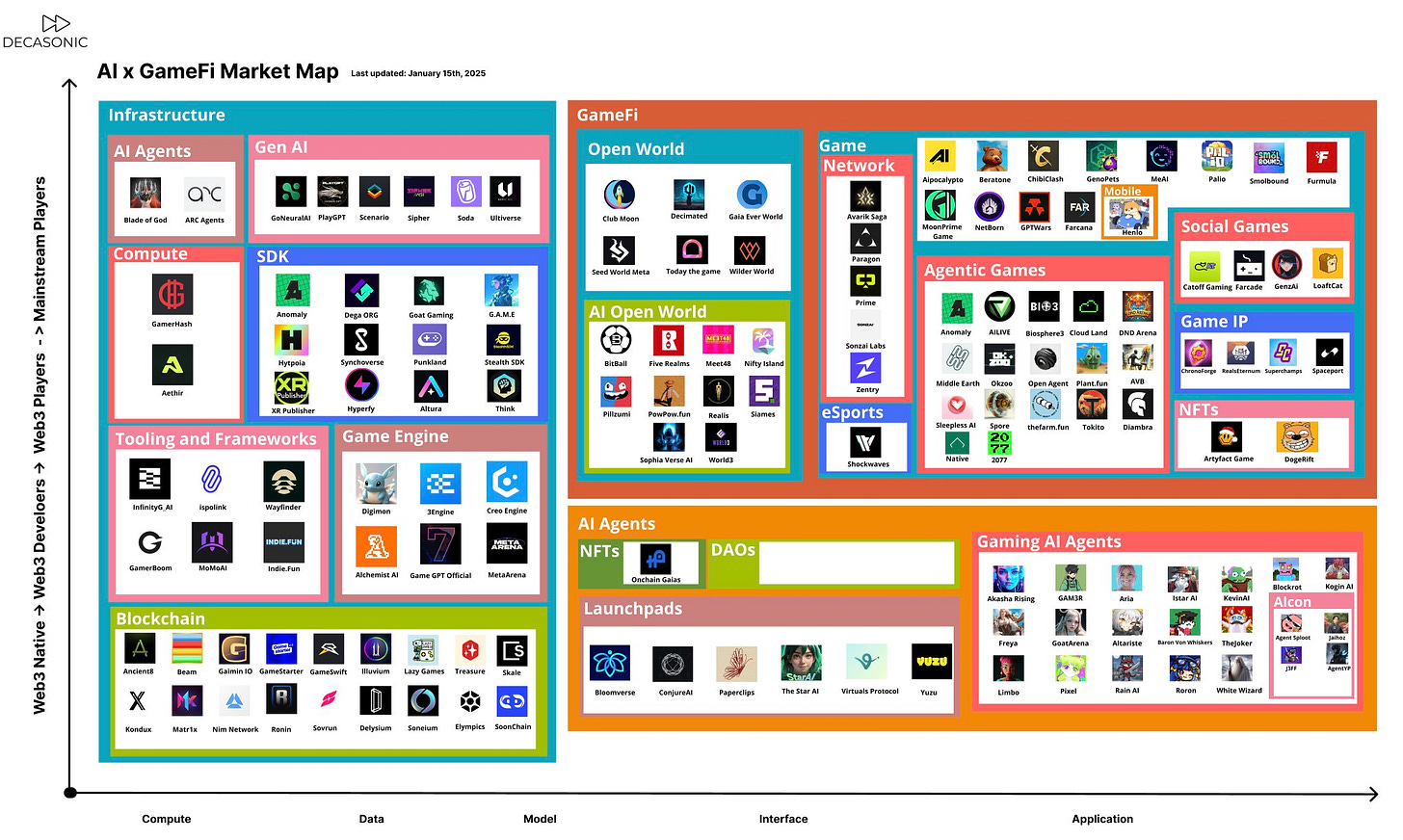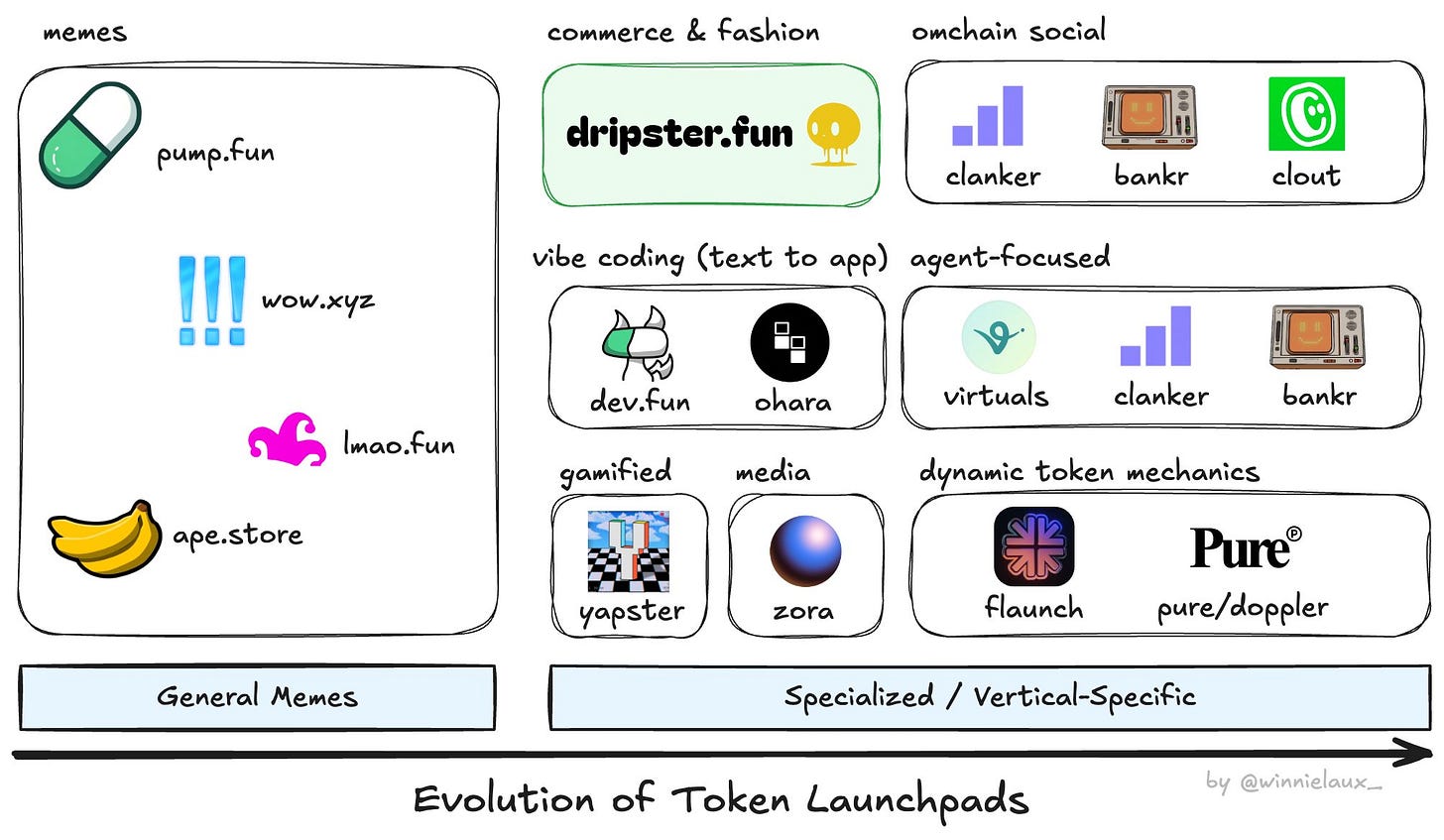Thoughts on Ai Agents
The Ai agent is going to be the 100x this cycle. It has the highest probability of NFT and gamefi altogether.
AI is cool and interesting. How can one be exposed to it? There are very few public companies in traditional finance that you can buy stocks in to express your bullishness. AI tokens are one of the few ways people can be exposed to this sector. Ai apps? There’s no vehicle for you to invest in cal Ai. There’s no vehicle for you to invest in openAI. And you’re not interested in expressing your interest in AI through Apple and Google or Nvidia either. You want something spicier.
Ai apps are mostly chatgpt wrappers - which is fine. I love Cal AI. I think it’s fantastic. And respect to the young master Zach Yadegari for his achievement. But without sounding dissful, it is a low hanging fruit - and there are probably still a lot more low hanging chatgpt wrapper fruits out there. However, the point is that there’s no way to express any bullishness or be exposed to the upside of amazing AI developments in consumer apps. The same goes for AI agents. Crypto is the only way in which your bullishness in AI agents can be expressed. And perhaps as things mature slightly more, bullishness in AI apps could also be expressed through crypto.
With the advent of MCP, AI agents can now both interact onchain and offchain. But there’s a distinct advantage in onchain AI agents. One, the onchain universe is a universe with a unified physics, whereas web2 is an incoherent spaghetti of APIs. The second reason is the fact that with money, you can do a lot more interesting things. And crypto is the only form of money that AI agents can realistically operate. They can’t operate credit cards to the same degree of permissionlessness and reliability as crypto wallets - not unless the AI agent is interested in starting a shopify store for whatever reason. AI agents will get there, for sure, but AI agents are already in crypto - onchain. Three, onchain behaviour is publically viewable, and therefore more attention-captivating. Noveau behaviour in and interactions between agents are more likely to be captured by crypto twitter, documented, and subjected to reality TV treatment, just like what happend to the Luna depeg, the 3AC blowup, and the FTX collapse. Not saying that AI agents will somehow blow up like these cataclysms, but if they do anything funny, exhibit any emergent behaviour, or induce any flywheel, they compared to agents on web2 rails are readily exposed to more media attention. Who really knows if an Agent has created a youtube channel of the ultimate brainrot that rakes in 3 million per year?
So agents on chain, what are the players? What are the horses we can bet on?
I think there are some sectors or narratives are basically hopeless.
The Agent Hedge Fund Manager definitely tops the list.
The reason is almost idiotically obvious. If an agent is really able to function as an hedge fund manager onchain, it will never be publically available to you. People simply hide it and use it to milk unthinkable gains for themselves, until whatever strategy or alpha that made the agent so profitable has gone stale or outdated. Then they will opensource it like that classic bunnyswap sandwiching bot. Otherwise, Jared will forever remain working in the subway, never ever to see the public. Skepticism towards all AI managed hedge funds.
But that’s perhaps too dismissive. Ai hedge managers are definitely going to appear, for whatever reason disagree with the above midcurve talk. What would thsi kind of AI agent managed hedge fund appear? Well, perhaps on Hyperliquid? Where instead of Sifu running your vault, it’s an AI agent. And the AI agent running it can perhaps be tokenized, in an NFT. And perhaps a platform for creating these hedge fund agents could be designed, such that users can know with certainty that the agents created and operating these pools will never collude - which is something you can never know in the case of Sifu et al.
Another subsector of the AI crypto sector I’m not according any intelligent effort to be exposed to are the AI memecoins, so Fartcoin, Goat, and the rest. There are no fundamentals, and now that the novelty has worn off, they are identical to memecoins effectively. And to ride memecoins, what you basically have to do is to beat the market making insiders - or rather, you need to be the select few that can ride on a memecoin prior to market makers pump the coin up. What market makers do with memecoins, is that any given moment, they control a basket of them, and they rotate the pump-and-dump throughout the basket, until they have enough ammo to do a big one where the market cap will be kept high - and so attention of that chosen memecoin reaches a market cap that could be more self-sustaining. And given the higher self-sustainability of attention command of the memecoin, buy volume at this high valuation could be more sustained - and this is where the market maker exits.
But again is this too dismissive? Sure, I think avoiding Fart and Goat is correct. But what if that market making process could be done by a Terminal of Truth? Ok, but again, it seems the value is in the agent itself, and not whatever token the agent is market making. And just like any market maker of a traditional memecoin that has achieved attention self sustinability critical mass, he can always rug. A human can rug. An agent can also rug, especially if he is programmed to maximise profits. Again the value seems to be in the agent, as an asset.
It should seem that the common thread here is that agents are assets. And you want to own the good ones? But how can one identify the good ones?
This is clearly begging some kind of gold and shovels kind of analysis.
But let’s put that aside for a while, and take a look at this prophecy on the evolutionary trajectory of crypto Ai agents this cycle:
Phase 0: Twitter bots + memecoins
Phase 1: Frameworks and Chatbots
We’re beginning with basic chatbots, early AI agents like Eliza and ARC, which establish the initial frameworks. These are the foundational pieces—akin to the “blueprints” of a future where AI can not only communicate but act on its own.
Phase 2: App Stores and Independent Agents
As the ecosystem matures, we’ll see the rise of app stores populated by independent agents. These aren’t just simple bots; think high-frequency trading systems, onchain hedge fund managers, or even influencer agents that execute tasks on platforms like TikTok. In this stage, the “shovels” become the primary tools. The market will likely favor those who can offer robust platforms (or launchpads) for agents rather than finding that elusive perfect agent with product-market fit. Names like Virtuals, ARC, Griffain, and VVV.
Phase 3: Swarms and Emergent Behavior
The final evolution is the emergence of swarms—clusters of AI agents operating in parallel, each specialized yet capable of dynamic, collective intelligence. These swarms, much like biological colonies, will have feedback loops that refine strategies in real time. Picture a scenario where specialized agents for data analysis and resource allocation interact to solve complex DeFi puzzles, much as a gladiatorial NFT fights its way through a blockchain arena. The promise here isn’t just isolated functionality, but an entire emergent system that could revolutionize sectors from traditional finance to decentralized gaming.
In considering the broader thesis, a few strategic points become evident:
Crypto-Native Maturity: AI agents built on crypto rails have the advantage of a unified, transparent, and money-driven ecosystem. They are inherently designed to operate within the parameters of decentralized finance, making them more likely to mature compared to their offchain counterparts.
GameFi as the Gateway: The lowest hanging fruit is GameFi combined with AI. The most promising implementation is one where AI agents function as gladiators in a competitive arena—both earning rewards by winning and existing as tradable NFTs.
Monetization Over Volume: It’s not enough to simply launch more agents. As the market evolves, monetization will shift towards taxing the execution layer—think agent marketplaces or execution platforms where access to premium AI models, compute power, or even inter-agent collaboration is the true revenue driver.
While many sectors are being hyped, it’s important to distinguish the shovels from the gold. Infrastructure plays or broad AI platforms may be interesting, but they often fall prey to the “loot problem”—where the true value is dispersed and the innovation diluted. Instead, the focus should be on three major areas: AI agent frameworks, AI agent launchpads, and the agents themselves. This approach is reflected in the taxonomy emerging from the current discourse, which spans from AI memecoins (often the “carbon dioxide” of AI hype) to the more substantial constructs like agent swarms and battle games.
Names to watch include:
Virtuals, ARC, Griffain, and VVV for their early role as app store-type platforms.
Digimon (via damn.fun) and NRN (Neuron) as early forays into AI GameFi, where the interplay between gaming mechanics and AI prowess is directly monetizable.
Desci projects that capture cryptoeconomic attention, even if some major figures view them with skepticism.
And, of course, the undercurrent of platforms like Spore which are hinting at the next step: swarms that might one day operate as decentralized, emergent collectives.
In essence, while the allure of a perfect AI agent may never be fully realized by the individual investor, the surrounding ecosystem—from frameworks and launchpads to competitive AI gladiators—offers multiple avenues for exposure. The strategy is clear: identify sectors with true 100x potential, spray and pray with diversified bets, and hold through the volatility, buying on dips when Bitcoin bottoms out.
This is the new frontier of crypto: where the evolution of AI isn’t just about making smarter chatbots or more efficient algorithms, but about creating an entirely new economy. An economy where AI agents are both the players and the game itself—a dynamic, decentralized ecosystem where emergent behavior can redefine value and where every action is transparent, auditable, and, most importantly, monetizable.
So, as we ask ourselves what players are in this unfolding drama, we must remain mindful: while the agent hedge fund manager might seem like the crown jewel, it’s more likely that the true opportunity lies in the many layers beneath—where platforms that enable, tax, and scale the execution of these agents will ultimately capture the lion’s share of the upside.





